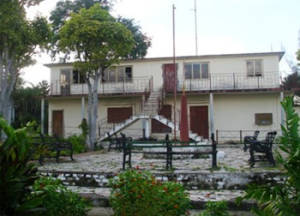Remnants of Cuba’s Sugar Industry
Photo Feature by Janis Hernandez

HAVANA TIMES, Nov. 1 — The sugar industry flourished in Cuba as the primary productive sector in the country after it was introduced by Spanish colonialists in earlier centuries.
It was the line of work in which the greatest amount of knowledge was accumulated here and was the basis of our agrarian economy.
The workforce in that sector today numbers only about 200,000 employees (5 percent of the country’s total of 4 million workers), with that share continuing to decline while we continue to squander those human resources.
In 1959 there were 133 sugar mills while today there are approximately 60 active ones. The dismantling of the sugar mills has undoubtedly been detrimental to the nation’s resource reserve.
In a “batey” (a sugar mill town) in the municipality of San Luis, where I spent much of my childhood and several years of my youth, since the 1959 triumph of the revolution there was a mill named the Rafael Reyes C.A.I. (Agro Industrial Complex) in honor of a martyr in the area. Nonetheless, no one ever stopped calling it by its old name: El central “Union.”
Today the once imposing refinery, of which parts of its oldest construction have been preserved along with some more modern departments, basically lies in ruins. That which remains is not even suitable for museum pieces.
What I have done is create a small photo feature of the place (I say “small” because there was little worthy of taking pictures). Nonetheless, and after experiencing a bit of nostalgia, I can show what remains of the old boilers, the tanks, sheds and chimneys of the old plant.

Some 85 percent of our economy depended on the sale of sugar beginning in the 1960s until the fall of the socialist countries, who were our main buyers. Because of the blockade, in addition to our no longer having Soviet customers, this industry was not prioritized for development. Instead, other sectors were mistakenly promoted. While these came to generate earnings over the very long-term, these were never to the extent that sugar could have.
Investment in the technology needed to develop this industry ceased, making it easier to close the mills. Today the country is engaged in work to recover from what was clearly demonstrated to have been a mistake, with this corrective effort being among the priorities of the new economic policy of the present government to rescue the sugar sector.
Currently sugar as a commodity is more stable on the world market and its prices have reached as much as $500 a ton. Despite this, as a cruel paradox of fate we no longer have sugar to export.
As for this industry — which is the most bountiful and profitable that we could have, given the variety of products derived from it and its multiple uses —in our country today it is evidenced by nothing but its remains.
Click on the thumbnails below to view all the photos in this gallery. On your PC or laptop, you can use the directional arrows on the keyboard to move within the gallery. On cell phones use the keys on the screen.


















Excellent article. Thanks, Janis.
Socialism is supposed to be based on science. The core of science is experimentation, analysis and, going forward, new experimentation.
The most striking thing to me about the ruination of the Cuban sugar industry under state ownership is that socialist intellectuals in Cuba have not–and presumably cannot–reexamine the theoretical basis of the Cuban model of socialism, and come up with critical analyses and meaningful recommendations. This seems to argue that the official methodology is not scientific, at all.